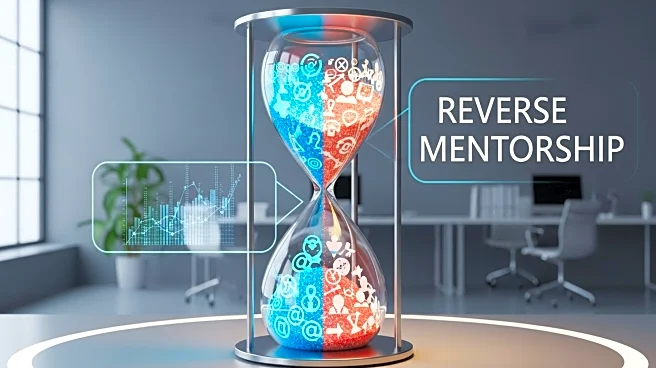What's Happening?
Reverse mentorship is becoming increasingly popular as a strategy to bridge generational gaps in the workplace. This approach involves junior employees mentoring senior colleagues, sharing insights on new trends, technology, and customer sentiments. The practice not only facilitates knowledge transfer but also fosters inclusivity and collaboration across generations. Organizations are encouraged to formalize reverse mentorship programs, setting clear guidelines to ensure effective interactions. By embracing this model, companies can enhance their adaptability and innovation, leveraging the diverse perspectives of their workforce.
Why It's Important?
As workplaces become more multigenerational, reverse mentorship offers a valuable tool for fostering understanding and collaboration. It challenges traditional hierarchies, encouraging senior employees to learn from their younger counterparts. This can lead to more informed decision-making and a better understanding of emerging trends and technologies. Additionally, reverse mentorship supports diversity, equity, and inclusion (DEI) goals by giving voice to younger employees and promoting a culture of mutual respect. By adopting this approach, organizations can enhance their resilience and competitiveness in a rapidly changing business environment.
Beyond the Headlines
Reverse mentorship not only benefits organizations but also contributes to personal growth for both mentors and mentees. Junior employees gain confidence and leadership skills, while senior employees develop a more open-minded approach to learning. This dynamic can lead to a more cohesive and innovative workplace culture. As companies continue to navigate the challenges of a diverse workforce, reverse mentorship offers a promising path to harnessing the full potential of all employees.










